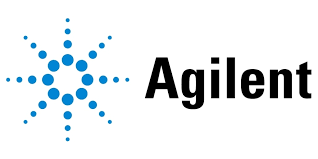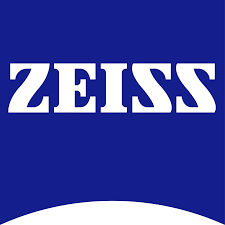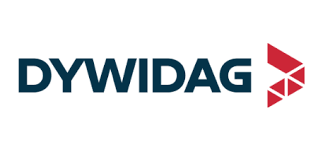Healthcare Workwear Market Report
Published Date: March 16, 2024 | Report Code: healthcare-workwear
Healthcare Workwear Market Size, Share, Industry Trends and Forecast to 2033
This market report provides a comprehensive analysis of the Healthcare Workwear sector, focusing on trends, forecasts, and insights for the period 2023 to 2033, covering market dynamics, size, segmentation, regional analysis, and growth potential.
| Metric | Value |
|---|---|
| Study Period | 2023 - 2033 |
| 2023 Market Size | $12.50 Billion |
| CAGR (2023-2033) | 6.8% |
| 2033 Market Size | $24.57 Billion |
| Top Companies | Medline Industries, Inc., Crocs, Inc., HENRY Schein Inc., Uline |
| Last Modified Date | 02 June 2025 |
Healthcare Workwear Market Report (2023 - 2033)
Healthcare Workwear Market Overview
Customize Healthcare Workwear Market Report market research report
- ✔ Get in-depth analysis of Healthcare Workwear market size, growth, and forecasts.
- ✔ Understand Healthcare Workwear's regional dynamics and industry-specific trends.
- ✔ Identify potential applications, end-user demand, and growth segments in Healthcare Workwear
What is the Market Size & CAGR of Healthcare Workwear market in 2033?
Healthcare Workwear Industry Analysis
Healthcare Workwear Market Segmentation and Scope
Tell us your focus area and get a customized research report.
Healthcare Workwear Market Analysis Report by Region
Europe Healthcare Workwear Market Report:
Europe's Healthcare Workwear market is projected to expand from $3.33 billion in 2023 to $6.55 billion by 2033, driven by stringent regulations on professional attire, increasing health awareness, and advancements in fabric technology.Asia Pacific Healthcare Workwear Market Report:
The Asia Pacific region is experiencing rapid growth, with the market size projected to rise from $2.40 billion in 2023 to $4.72 billion by 2033. This growth is attributed to increasing healthcare expenditure, rising population, and the expansion of healthcare facilities.North America Healthcare Workwear Market Report:
North America remains a leading market, with the healthcare workwear industry expected to grow from $4.78 billion in 2023 to $9.39 billion by 2033. The demand for innovative medical clothing and a strong presence of key market players drive this growth.South America Healthcare Workwear Market Report:
In South America, the Healthcare Workwear market is anticipated to grow from $0.96 billion in 2023 to $1.90 billion by 2033. The market growth is propelled by a growing emphasis on healthcare reform and increasing investments in the healthcare sector.Middle East & Africa Healthcare Workwear Market Report:
The Middle East and Africa market is set to see growth from $1.02 billion in 2023 to $2.01 billion by 2033, supported by improving healthcare infrastructure and increased government initiatives focused on health and safety.Tell us your focus area and get a customized research report.
Healthcare Workwear Market Analysis By Product Type
Global Healthcare Workwear Market, By Product Type Market Analysis (2024 - 2033)
The product types in the Healthcare Workwear market include uniforms, footwear, and protective wear. Uniforms, including scrubs and lab coats, dominate the market, with a significant share of 60.29% in 2023, projected to maintain this share through 2033. Protective wear, critical for infection control, has a strong market presence, and its size is expected to grow rapidly, making up 87.28% of the market by 2033.
Healthcare Workwear Market Analysis By Material
Global Healthcare Workwear Market, By Material Market Analysis (2024 - 2033)
Market segmentation by material highlights cotton as the leading choice, accounting for 60.29% of the market share in 2023 and expected to remain dominant in 2033. Polyester and blended fabrics follow, being increasingly favored for their durability and performance in demanding healthcare environments.
Healthcare Workwear Market Analysis By End Use
Global Healthcare Workwear Market, By End Use Market Analysis (2024 - 2033)
Hospitals account for the largest segment in Healthcare Workwear, with a market size of $7.54 billion in 2023, expected to nearly double by 2033. Clinics and long-term care facilities also represent substantial segments, indicating an overall expansion in healthcare service demand.
Healthcare Workwear Market Analysis By Functionality
Global Healthcare Workwear Market, By Functionality Market Analysis (2024 - 2033)
Functionality is a key driver in the market, with products designed specifically for protective wear gaining popularity due to the increasing focus on safety and hygiene in healthcare settings. The utility of workwear extends to significant features such as antimicrobial properties, comfort, and ease of movement.
Healthcare Workwear Market Analysis By Distribution Channel
Global Healthcare Workwear Market, By Distribution Channel Market Analysis (2024 - 2033)
The distribution channels of the Healthcare Workwear market include online and offline segments. Online sales are dominating the market with an 87.28% share in 2023, reflecting consumer preference for the convenience of e-commerce, while offline channels remain crucial in regions with less internet penetration.
Healthcare Workwear Market Trends and Future Forecast
Tell us your focus area and get a customized research report.
Global Market Leaders and Top Companies in Healthcare Workwear Industry
Medline Industries, Inc.:
A leading supplier of healthcare products, Medline is known for its comprehensive range of medical textiles, including scrubs and protective wear tailored to meet healthcare professionals' needs.Crocs, Inc.:
Famous for their comfortable clogs, Crocs also leads in manufacturing footwear ideal for healthcare settings, focusing on comfort, slip-resistance, and durability.HENRY Schein Inc.:
This global provider of health care products and services is also a key player in healthcare workwear, offering a range of medical uniforms and protective clothing.Uline:
Uline is known for its extensive offerings in all types of industrial and commercial supplies, including a robust selection of healthcare workwear and safety gear.We're grateful to work with incredible clients.









Related Industries
FAQs
What is the market size of healthcare Workwear?
The healthcare workwear market is currently valued at approximately $12.5 billion, with a projected compound annual growth rate (CAGR) of 6.8% from 2023 to 2033.
What are the key market players or companies in the healthcare Workwear industry?
Key players in the healthcare workwear industry include major manufacturers like Halyard Health, Dickies, and Medline Industries, alongside emerging brands that focus on innovative materials and sustainable practices.
What are the primary factors driving the growth in the healthcare Workwear industry?
The growth in the healthcare workwear industry is driven by heightened awareness of hygiene standards, increased healthcare spending, and the need for durable, protective clothing in various medical environments.
Which region is the fastest Growing in the healthcare Workwear?
The North American region is currently the fastest-growing market for healthcare workwear, expected to reach $9.39 billion by 2033, reflecting significant demand from hospitals and clinics.
Does ConsaInsights provide customized market report data for the healthcare Workwear industry?
Yes, ConsaInsights offers customized market reports tailored to specific needs within the healthcare workwear industry, ensuring relevant insights into emerging trends and market dynamics.
What deliverables can I expect from this healthcare Workwear market research project?
Deliverables from the healthcare workwear market research project include detailed market analysis, segmentation reports, regional insights, competitive landscape evaluations, and strategic recommendations.
What are the market trends of healthcare Workwear?
Current market trends in healthcare workwear include the growing popularity of sustainable fabrics, the integration of smart textiles, and the rise of e-commerce platforms for retail distribution.
